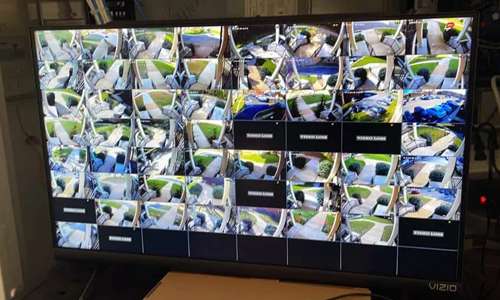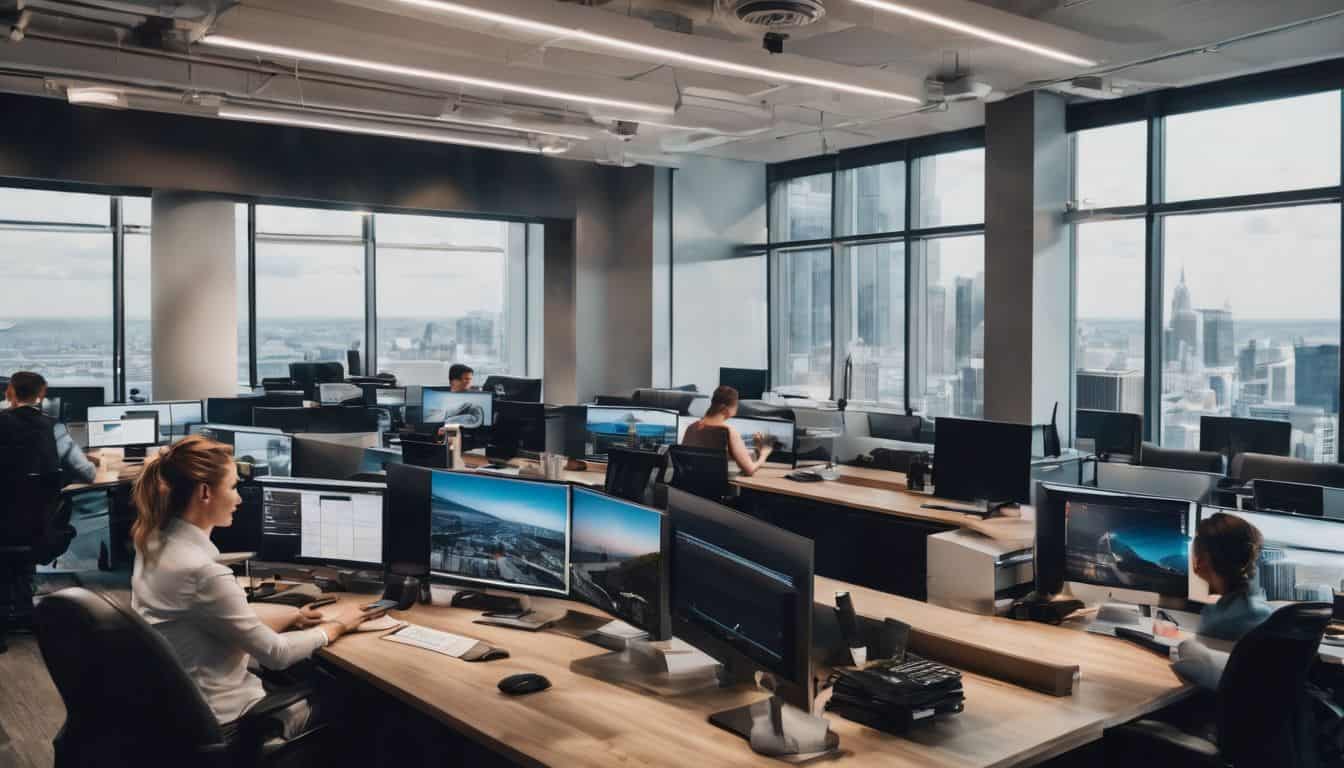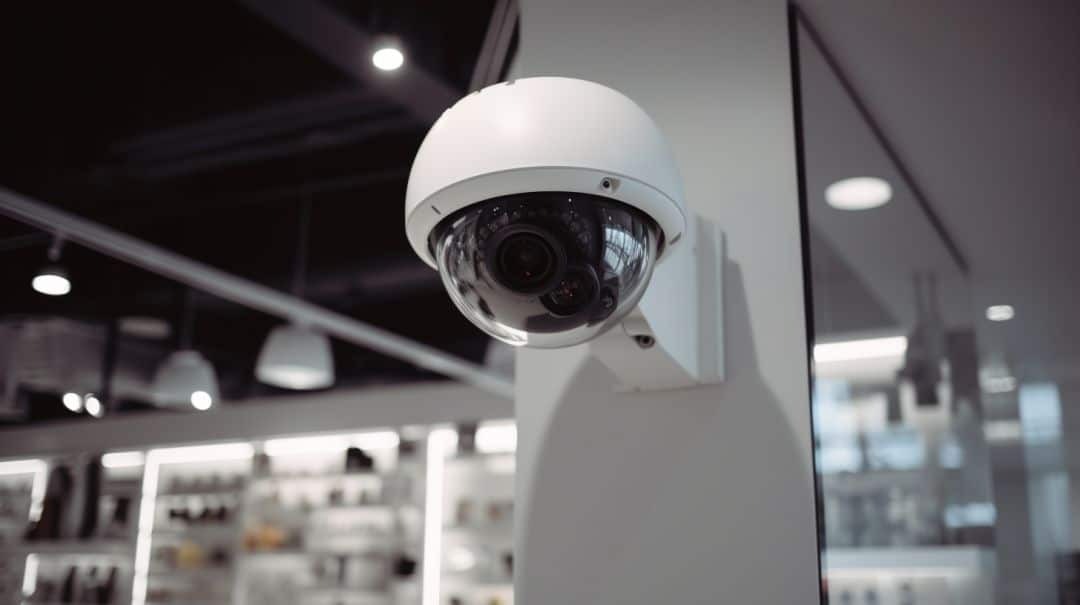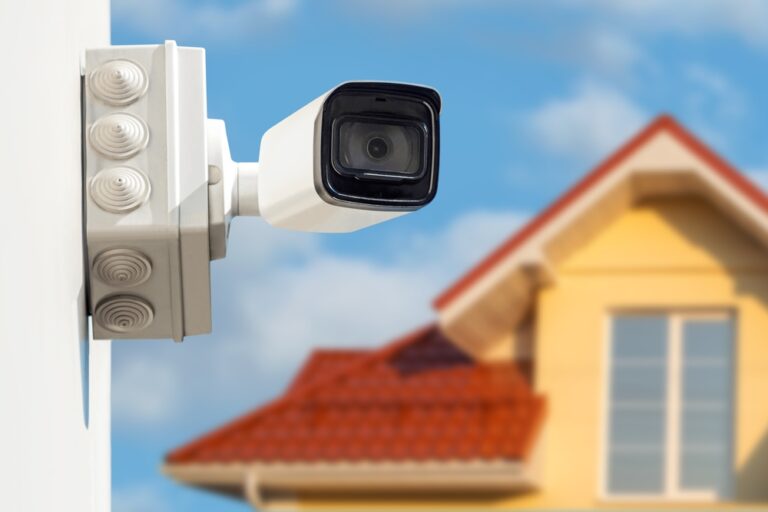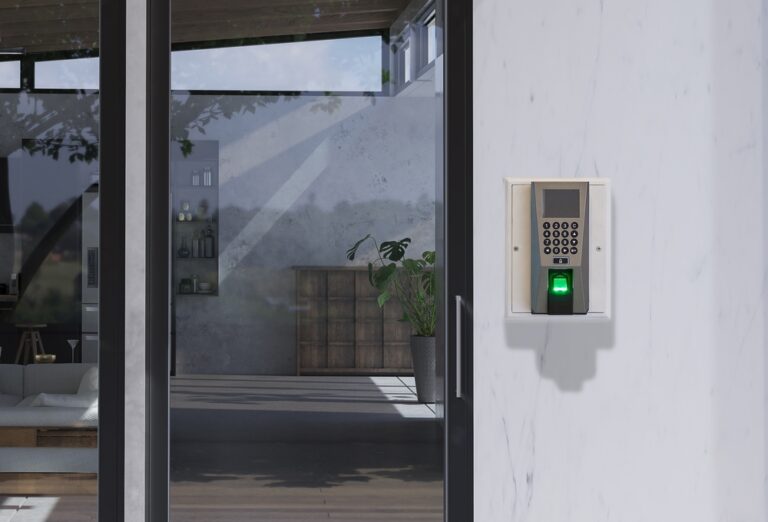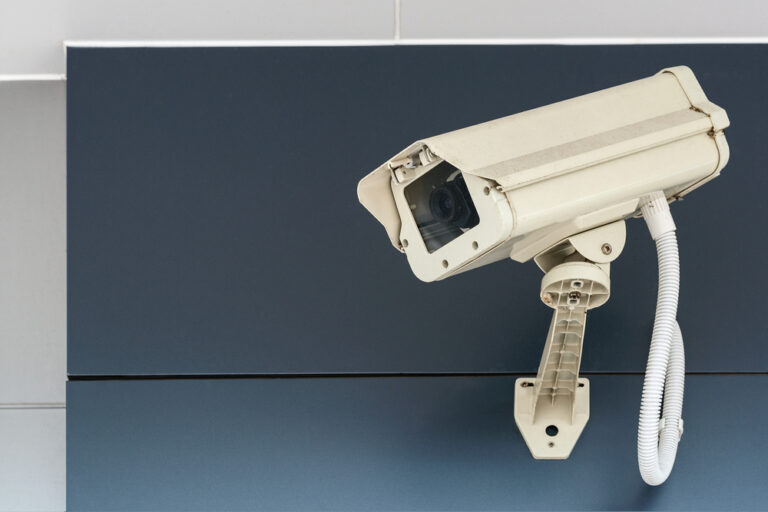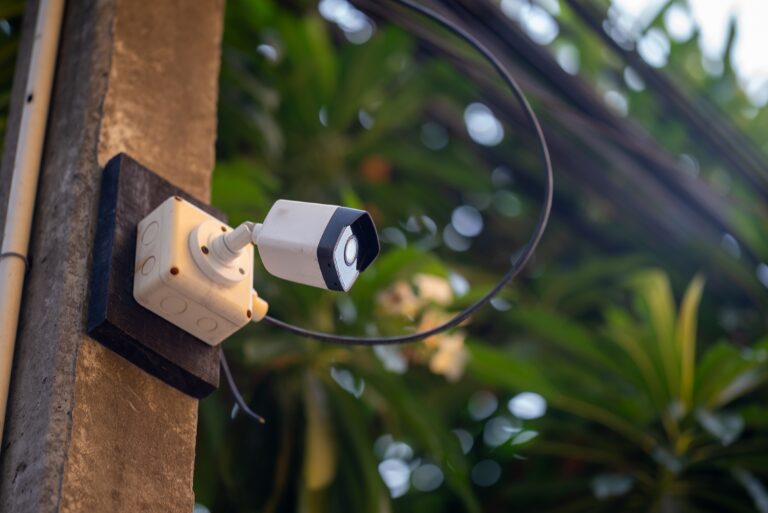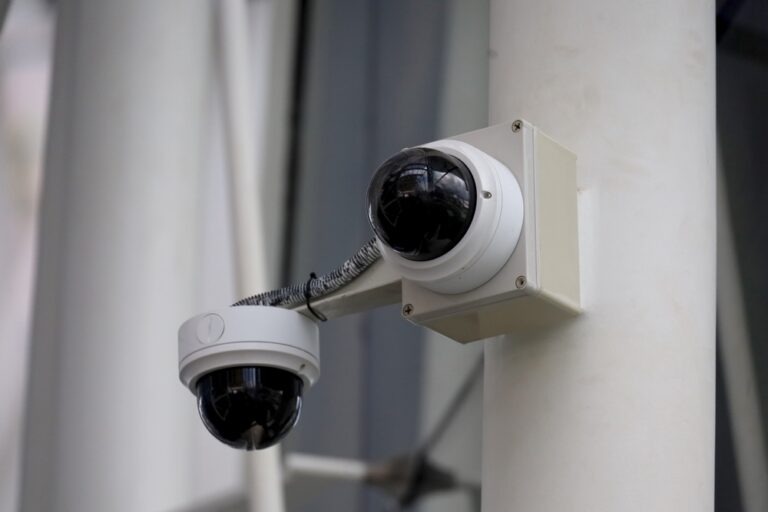- 1) Key Takeaways
- 2) Why Commercial Targets Are Vulnerable to Break-Ins
- 3) How Security Cameras Can Help Harden Commercial Targets
- 4) Choosing the Right Security Camera for Your Business
- 5) Installation Process for Security Cameras
- 6) Insider Tips for Optimal Security Camera Placement
- 7) Enhancing Security with Additional Features
- 8) The Role of Security Cameras in Effective Security Measures
- 9) How Proper Security Camera Installation Can Save Your Business Money
- 10) Conclusion: The Importance of Hardening the Target Against Break-Ins
-
11)
FAQs
- 11.1) Why are commercial businesses often targeted for break-ins?
- 11.2) What are the benefits of installing security cameras?
- 11.3) Should I choose wired or wireless security cameras?
- 11.4) Where are some high-risk areas I should focus my security cameras on?
- 11.5) How can installing security cameras save my business money?
Welcome to the world of keeping your business safe! Hardening the target means making your place tougher for burglars to break into. Think of it like putting up a strong fence to keep out animals that might eat your garden.
People have found that this method really works, especially at places that thieves like to hit.
Your business is important and you need to protect it from bad guys who want to steal or cheat. That’s where things like locks you need a key for come in handy. They are part of what we call target hardening, which is just one way you can make your shop or office safer.
Believe it or not, even big groups like the military use these tricks to stop enemies from attacking their important stuff. When you do target hardening well, fewer criminals will bother trying to mess with your place.
Now let’s talk about how watching over your shop with security cameras can be a super-smart move. This article will show you all kinds of cameras and help pick the best ones for you.
We’ll walk through how to put them up and share insider tips on choosing just the right spots for them.
Hardening up doesn’t just scare off thieves; it can also save money by avoiding costly break-ins and lowering what you pay for insurance. Ready? Let’s make sure those sneaky burglars think twice before messing with your business!
Key Takeaways
- Security cameras can stop break-ins by scaring thieves away and catching them on video.
- You should choose the right camera for your needs, and put it in a place where it can see high-risk spots.
- Motion sensors and alarms add extra safety by making noise when they sense someone there who shouldn’t be.
- Watching your cameras from a phone or computer lets you check on your business any time.
- Making your business hard to break into means criminals will likely leave it alone.
.
Why Commercial Targets Are Vulnerable to Break-Ins

Moving from the basics, let’s dive into why break-ins are a big problem for businesses. Thieves often see commercial places as good targets. They think there is money, goods they can sell, or important information they can take.
Stores, offices, and warehouses might not have people around all the time, especially at night or on weekends. This makes it easier for someone to try to break in without getting caught.
Bad guys also know that some companies don’t use strong enough locks or alarms. Doors and windows may be weak and easy to open. Sometimes these places are hidden away where no one can see what’s happening, which gives thieves a chance to do their work without being seen.
Also, when workers steal from their own company it’s a big issue too. They know how things work inside the business and might find ways to get past security devices without anyone noticing — until it’s too late.
How Security Cameras Can Help Harden Commercial Targets

When it comes to bolstering your business’s defenses against break-ins, consider security cameras not just as watchful eyes, but as the bedrock of deterrence—turning your commercial space into a fortress of vigilance.
They serve more than one purpose; by their mere presence, they can dissuade potential burglars and provide critical insights into vulnerabilities around your property.
Types of cameras

Choosing the right kind of security camera can be crucial in making your business safer. They act as both a guard and a watcher, protecting you from thieves.
- Dome Cameras: These cameras are shaped like a dome and are often placed on ceilings. They’re hard for thieves to spot which direction they are filming. This makes it tough for someone to avoid being seen.
- Bullet Cameras: Long and cylindrical, bullet cameras point in one direction, like looking down an alley or at a door. They are good for watching specific spots.
- PTZ (Pan, Tilt, Zoom) Cameras: These cameras can move around to follow something or someone. If you have someone watching the video live, this is a great choice.
- Day/Night Cameras: No matter if it’s bright or dark, these cameras can see clearly. They work well outside where the light can change a lot.
- Infrared/Night Vision Cameras: For when it’s really dark, these use infrared to make sure nothing gets missed at night.
- Wireless IP Cameras: You can connect these to the internet and watch them from anywhere with your phone or computer.
- Hidden/Camouflage Cameras: Sometimes looking like something else, these sneakily keep an eye on places without people knowing there’s a camera.
- High-Definition (HD) Cameras: When you need clear pictures to see faces or car plates, HD is what you want.
Benefits of security cameras
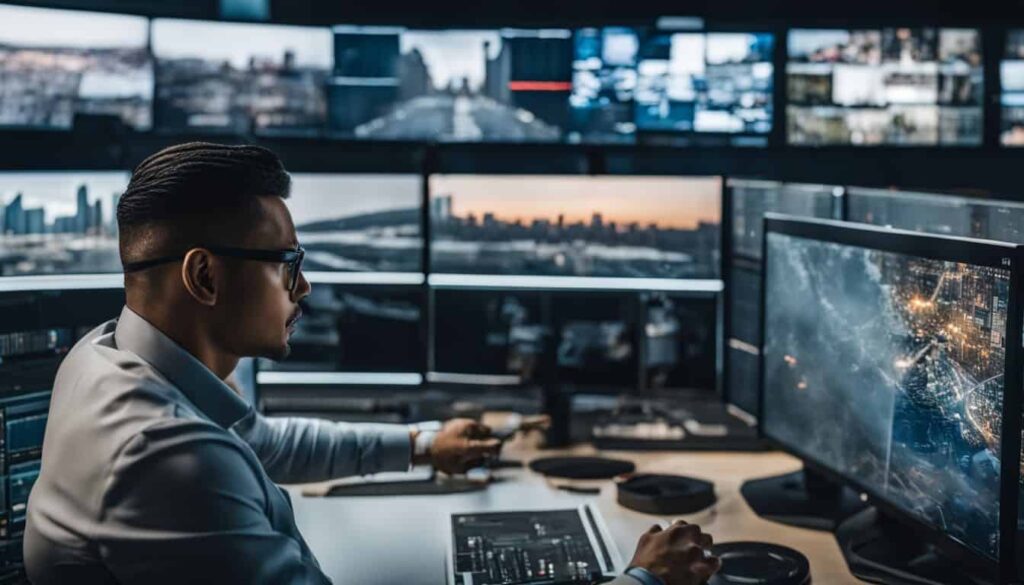
Security cameras come in many types to match your needs. They help you keep a watchful eye on your property. Here’s how they can benefit your business:
- Deter Crime: Cameras can scare off people who might break in. When criminals see a camera, they often decide not to do something bad.
- Watch Over Your Business: You can look at live video or recorded footage anytime. This means you can see what’s happening at your business even when you are not there.
- Gather Evidence: If someone does break into your business, cameras can provide evidence. The police can use this to find and charge the person who did it.
- Keep Employees Honest: Cameras help prevent employees from stealing or doing wrong things because they know someone could be watching.
- Save Money: You might pay less for insurance if you have good security cameras because they lower the risk of theft and damage.
- Check on Safety Risks: Cameras let you spot unsafe things happening before they cause big problems.
- Respond Fast to Alarms: If an alarm goes off, you can quickly look at the camera to see what’s causing it.
- Control Access: You can see who comes in and out of your building, which helps keep unwanted people out.
Choosing the Right Security Camera for Your Business
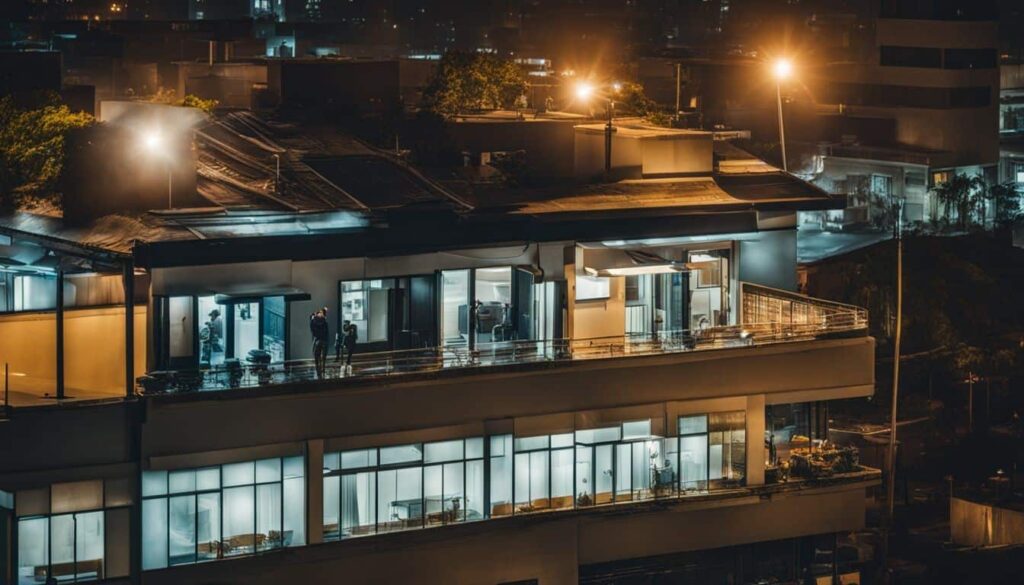
Selecting the ideal security camera is crucial—it’s not just about buying a piece of technology, it’s about investing in your business’s safety and resilience. Understand that the camera you choose becomes the watchful eyes that never sleep, ensuring every corner of your premises is under vigilant surveillance.
Consider location and coverage
Picking the right spot for your security cameras is key. You want to cover places where a thief might try to get in, like doors and windows. Make sure cameras can see these spots well, even when it’s dark outside.
Think about inside coverage too. Cameras should watch over places where important stuff is kept or where people don’t go often. This helps catch sneaky moves and keeps your place safe from folks who might take things that aren’t theirs.
Determine resolution and storage needs
Think about how clear you want your camera images to be. High resolution cameras give you sharp pictures which can help tell who broke in or what they took. But remember, more detail means bigger video files.
You’ll need enough storage to keep all that footage safe. It’s like having a really good memory – the better it is, the more space you need.
You have choices for saving your videos too. Some systems store things in the cloud over the internet, and others save right there at your business on hard drives. Look at how much video history you want on hand; this will guide you in picking out the right size of storage for your needs.
More storage lets you go back further to check on past events if something happens at your place when no one’s watching.
Compare wired and wireless options
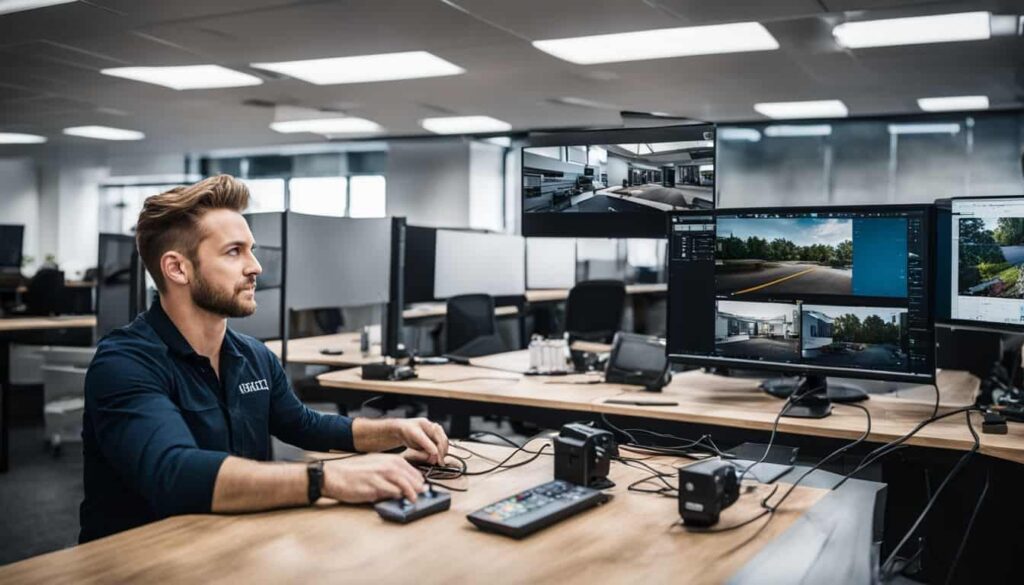
Having determined your resolution and storage needs, the next step involves choosing between wired and wireless security camera systems. Each has its attributes that could sway your decision, depending on what suits your business the best. Let’s delve into a comparative overview to aid you in this crucial choice.
| Feature | Wired Security Cameras | Wireless Security Cameras |
| Installation | Requires professional installation; cables must be routed through walls. | Easier to install; minimal drilling and no extensive cabling. |
| Reliability | More reliable signal since it’s not affected by wireless interference. | Subject to signal interference; depends on the strength of the wireless network. |
| Power Source | Typically powered by the building’s electrical system. | Often battery-powered, requiring regular maintenance. |
| Video Quality | Usually offers higher video quality and supports more cameras. | Quality can vary but is generally improving; some support HD video. |
| Flexibility | Less flexible once installed; difficult to move cameras. | Cameras can be easily relocated as needed. |
| Cost | More expensive upfront due to installation costs. | Less expensive initially, but may require additional accessories. |
| Security | Less vulnerable to hacking since it’s not dependent on a network. | May be more susceptible to hacking; requires strong network security protocols. |
Gear your decision towards the system that aligns with your security expectations and logistical capabilities. Remember, target hardening is about reducing vulnerability and enhancing safety—choosing the appropriate security camera setup is paramount in this mission.
Installation Process for Security Cameras
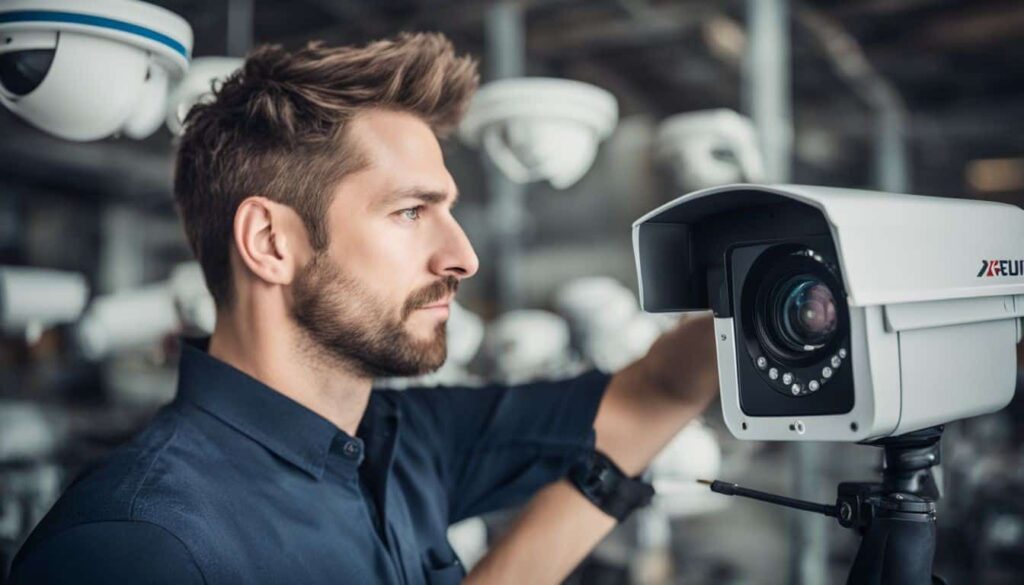
Navigating the installation process for security cameras may seem daunting, but with the right guidance, it can be an empowering step to enhance your business’s security posture—discover how to secure your commercial space effectively.
DIY vs professional installation
Deciding between DIY and professional installation of security cameras is a pivotal step in hardening your business against break-ins. Your choice could determine how effectively your surveillance system functions and how well it deters potential intruders.
| DIY Installation | Professional Installation |
| Cost-effective; saves on labor expenses Flexible scheduling around business hours Personal involvement ensures specific needs are met Ideal for those with technical skills and know-how | More costly due to labor charges Installation scheduled according to technician availability Benefit from professional expertise and experience Typically includes a service warranty and support |
| Potential for mistakes without proper knowledge Responsibility to troubleshoot and maintain system May lack advanced tools for optimal placement | Assurance of proper installation and setup Technicians handle all maintenance and repairs Access to the latest tools and security technologies |
Embrace the security and peace of mind a professional installation offers, or take on the challenge of DIY if you’re skilled and looking to save on costs. Remember, target hardening is not just about placing cameras; it’s about strategically implementing security measures to make your premises less attractive to criminals. Your decision could significantly impact the efficacy of the situational crime prevention methods at your business.
Steps for installing security cameras
Installing security cameras is a big step in target hardening for your business. Here’s how to do it right, making sure burglars think twice before trying to break in.
- Pick the best spots: Choose where you want the cameras. High-traffic and less visible areas are key places to watch.
- Get the tools ready: You’ll need a drill, screws, wall anchors, and a ladder for high spots.
- Mount the camera bracket: Use the drill to put the bracket firmly in place.
- Attach the cameras: Once the bracket is up, secure your camera onto it.
- Connect cables: If your system uses wires, run them from each camera to your recorder or monitor.
- Hide and protect wires: Keep cables out of reach by tucking them away or using conduits.
- Power up: Plug in your cameras or make sure their batteries are charged.
- Set up recording: Fix your digital video recorder (DVR) or network video recorder (NVR) in a safe spot.
- Test the system: Check that every camera records well and covers the right spots.
- Adjust as needed: Change angles or settings until you get clear views of all important areas.
Insider Tips for Optimal Security Camera Placement

Discover the expert strategies for positioning your security cameras in just the right spots to enhance surveillance effectiveness—true game changers that could make all the difference for your commercial safety.
Keep reading to unlock these crucial insights.
High-risk areas to consider

You know your business best, but some spots are often easy targets for break-ins. Protect these high-risk areas to keep your space safe.
- Entrances and Exits: Doors are the first choice for a criminal looking to get in. Make sure all entry points have good locks and are covered by cameras.
- Windows: These can give thieves another way in. Put locks on all windows and position cameras to watch them day and night.
- Loading Docks: Trucks come and go here, making it busy and sometimes less watched. Cameras should keep an eye on this spot to catch any odd behavior.
- Cash Registers: Money draws criminals. Have a camera watching over each cash register area.
- Offices: Private spaces might hold important info or valuables. Lock them up well and use cameras inside too.
- Storage Rooms: Thieves might think they can find things to steal here when no one’s looking. Locks and cameras help protect these rooms.
- Unlit Areas: Dark spots can help hide bad acts. Light these areas well and have cameras that see in the dark.
- Blind Spots: Every place has corners or nooks that are hard to see. Fix this by putting up mirrors or more lighting, along with a camera.
Avoiding common placement mistakes
Security camera placement in high-risk areas is crucial. But even the best cameras won’t work right if they’re put in the wrong spots. Here’s how to avoid common mistakes:
- Put cameras up high where no one can mess with them. Make sure they’re out of reach and give a clear view.
- Don’t point them at bright lights or windows. This can make the video too bright or full of shadows, making it hard to see.
- Make sure nothing’s blocking the camera. Trees, decorations, and signs should not hide what you need to see.
- Keep an eye on all doors and windows. Place cameras so you can see anyone coming in or going out.
- Your camera’s view should not be too wide or too narrow. Find a middle ground so you can see enough but still tell what’s happening.
- Use proper lighting around cameras at night. If it’s too dark, the video won’t help much.
- Check your camera angles regularly. Make sure nothing new is blocking the view.
Enhancing Security with Additional Features
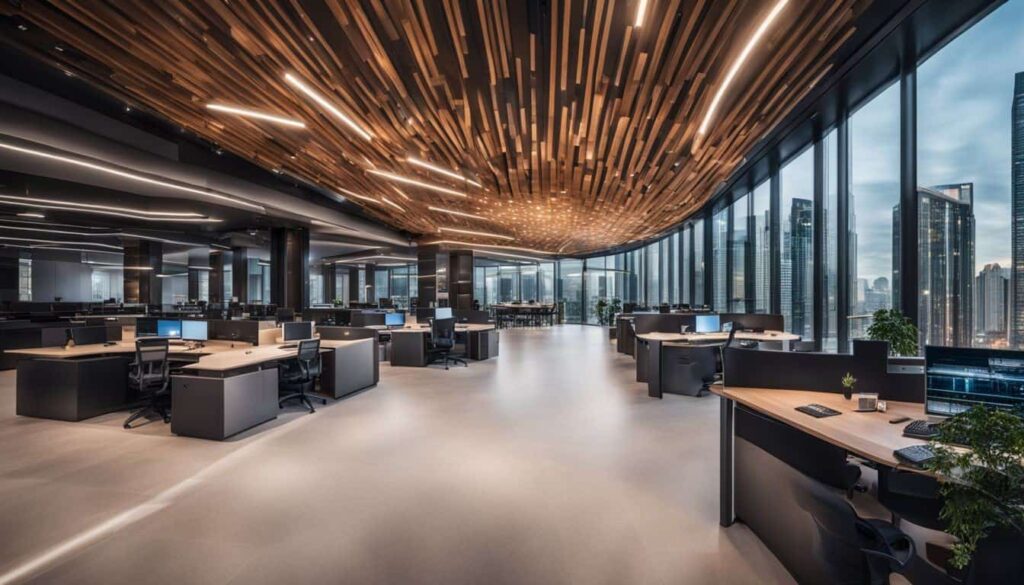
Enhancing your commercial space’s security goes beyond just installing cameras—embrace the power of additional features like motion sensors and smart integration for a truly robust defense system, compelling would-be criminals to think twice.
Keep reading to discover how these advancements can complement your surveillance efforts and provide peace of mind.
Motion sensors and alarms
Motion sensors and alarms are powerful tools to help keep your business safe. They scare off intruders and alert you to danger fast.
- Understand how motion sensors work: Motion sensors detect movement in an area. If someone walks into a space they shouldn’t, the sensor feels it and can set off an alarm or send you a message.
- Choose the right type of motion sensor: There are different kinds like infrared, microwave, and dual technology. Pick one based on what you need, like if you want it to work in the dark or across big spaces.
- Place motion sensors correctly: Put them in spots where a burglar would have to pass through. Good places are near doors, windows, and hallways.
- Connect motion sensors to alarms: When a sensor picks up movement, it should make an alarm sound loud. This noise can make the bad guy run away before they take anything.
- Test your system often: Make sure everything works by checking it regularly. You don’t want to find out it’s broken when it’s too late.
- Train your staff on how to use them: Teach people at work what to do if the alarm goes off by mistake or for real. They need to know how to turn it off and who to call for help.
- Look for professional monitoring options: Some services watch over your sensors and alarms 24/7. If they see something wrong, they can call the police for you even if you’re not there.
Remote monitoring options
You work hard to run your business, so its safety is super important. Remote monitoring options let you keep an eye on things any time, from anywhere. Here’s how:
- Watch live feeds: You can check what’s happening right now at your place with live videos. Your phone or computer can show you everything the cameras see.
- Get alerts: If something strange is going on, the system will send you a message. It might be an email or a notification on your phone.
- Record footage: The cameras are always recording. You can go back and look at what happened earlier if you need to.
- Share access: If you want, other people in your business can watch the cameras too. Choose who gets to see what for better teamwork.
- Connect to alarms: If there’s trouble, like someone breaking in, the camera system can tell the alarm to make noise and scare them off.
- Control with apps: Using an app means turning cameras on or off is easy peasy. You don’t even have to be at your business to do it.
Integration with smart home systems
Smart home systems add a new layer to security. They let you control cameras, lights, and alarms from anywhere with your phone or computer. This means you can check on your business even when you’re not there.
Connect the cameras to the internet and get alerts if something happens.
You can set up rules so things work together. For example, if a camera sees movement outside opening hours, it could turn on lights or send an alert. With these smart tools, stopping break-ins becomes much easier.
Next up: Understanding how security cameras act as a crime stopper..
The Role of Security Cameras in Effective Security Measures
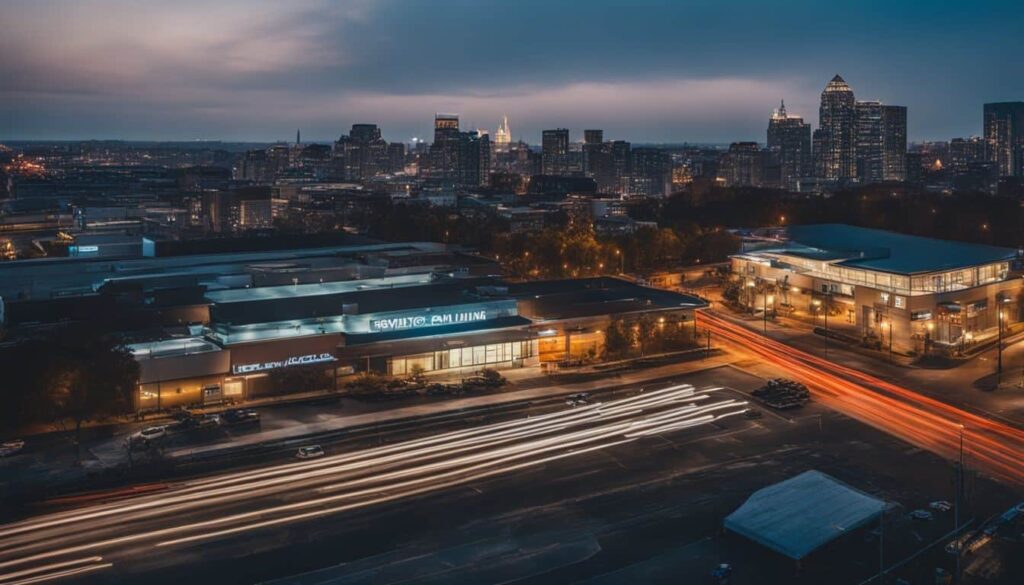
Surveillance isn’t just about recording crime, it’s a critical chess move in your strategy to deter bad actors. Security cameras stand as vigilant sentinels, signaling to would-be burglars that your business is not one to be trifled with – their presence alone can shift the balance, making your commercial space a far less appealing target for criminal activity.
Acting as a deterrent
Security cameras stand out. Thieves see them and often decide it’s not worth the risk to break in. Your business becomes a tough target, not an easy win. This is called “target hardening.” It means making your place so safe, that criminals just give up and move on.
Having these cameras up high and visible also helps stop people who might steal from inside the business—like dishonest employees. They know they’re being watched, so they think twice before doing anything wrong.
A good camera system makes your business safer from all sorts of crime.
Providing evidence for investigations
Security cameras play a big role in solving crimes. They catch the bad guys on video. This means if someone breaks into your business, you have their picture. The police can use it to find them.
Your camera footage is hard proof that helps win cases in court.
Catching all the details matters for evidence too. High-quality videos show faces and other important things clearly. So, when you choose a camera, think about how well it records pictures—even at night or when far away.
This makes sure you get good evidence to help police and keep your business safe from harm.
Monitoring for suspicious activity
Keeping an eye on your business for any odd behavior is a big part of keeping it safe. Security cameras are powerful tools that watch over your place when you can’t. They catch sneaky moves like someone trying to hide or breaking in after hours.
You want your cameras to be alert all the time because bad guys often look for chances when no one is watching. Cameras help scare them off, knowing they might get caught on video.
And if something does happen, you have proof to show the police what went on and who was there.
How Proper Security Camera Installation Can Save Your Business Money
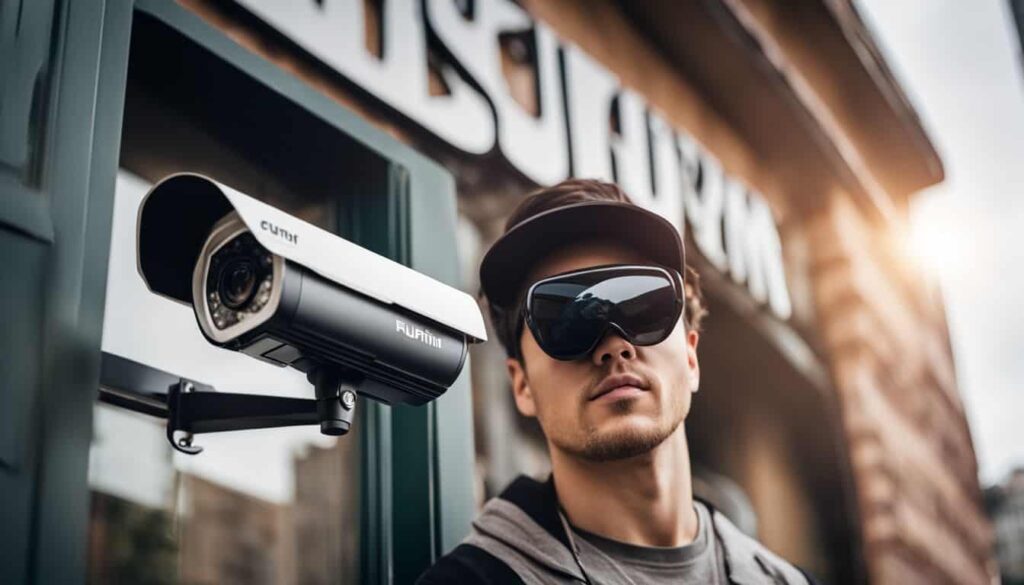
Investing in a thorough security camera setup is more than just a safety precaution—it’s a smart financial move for your business. Getting it right the first time can sidestep the steep costs associated with theft and vandalism, not to mention potentially lowering your insurance premiums through demonstrable risk mitigation.
Avoiding costly break-ins
Having good security cameras is like having a big guard dog; it makes thieves think twice before trying to break into your place. Break-ins can cost you a lot of money, not just in what gets stolen, but also in fixing broken doors and windows.
Don’t let that happen! Make sure you have cameras watching over every corner where someone might try to sneak in.
Good locks on doors and windows are part of hardening the target too. They’re like the teeth of the guard dog – they make it real tough for crooks to get inside without making a lot of noise or taking too much time.
And when thieves know it’s going to be hard work breaking in, they usually pick an easier place to steal from instead.
Next up, let’s look at how cutting back on insurance costs is another smart way your business keeps more money in its pocket by using security cameras right.
Reducing insurance premiums
Good security cameras keep an eye on your business and can help cut down on insurance costs. They show insurers that you’re serious about protecting your place from break-ins and theft.
This makes you seem like a safer bet, so they might charge you less for insurance. It’s smart to harden the target—your business gets better protection, and you can save money at the same time.
You’ve got to pick the right camera setup though. Picking strong locks for doors and windows or installing a tough alarm system are all part of making your spot harder to crack into.
These moves not only scare off would-be thieves but also get the attention of insurance companies. They often give discounts when they see that you’ve taken big steps in crime prevention measures around your workplace.
Conclusion: The Importance of Hardening the Target Against Break-Ins

Making your business safer is smart. Security cameras are a big help. They watch for trouble and scare off bad guys. You’ll pick the best camera and put it in the right spot. Your business can save money by not getting robbed and you might pay less for insurance too.
Now, go make your place tough for thieves! Keep learning about safety to stay one step ahead. Remember, when your business is safe, you’re set up for success. Protecting what you’ve built matters a lot.
Take action today and keep those doors closed to crime!
FAQs
Why are commercial businesses often targeted for break-ins?
Commercial businesses often seem like good targets to thieves because they think there is money, goods to steal and sell, or important information inside. Stores, offices, and warehouses may not have people around all the time, making it easier to break-in without getting caught.
What are the benefits of installing security cameras?
Security cameras deter crime by scaring off potential thieves. They allow you to monitor your business remotely via phone or computer. Cameras also provide evidence if a break-in occurs that police can use to identify and charge suspects. They can save on insurance costs and help identify safety issues before they become big problems.
Should I choose wired or wireless security cameras?
Wired cameras offer more reliable signals unaffected by interference, while wireless cameras are easier to install and relocate. Wired systems have higher video quality and support more cameras, while wireless options are more affordable upfront. Consider your budget, existing infrastructure, and security needs.
Where are some high-risk areas I should focus my security cameras on?
Areas like entrances/exits, windows, loading docks, cash registers, offices, storage rooms, dark/unlit areas, and blind spots/hidden corners tend to be targets for break-ins. Position cameras to monitor these vulnerable access points.
How can installing security cameras save my business money?
Deterring break-ins avoids costly damages and thefts. It also demonstrates to insurance providers that you are lowering risk, allowing you to possibly qualify for premium discounts. Thorough security camera coverage is an investment that can pay dividends.
